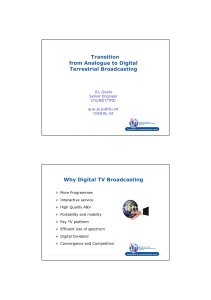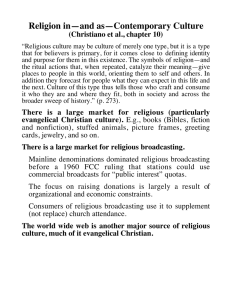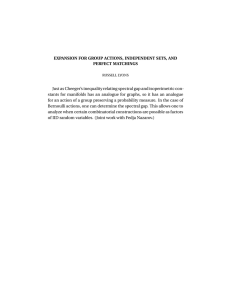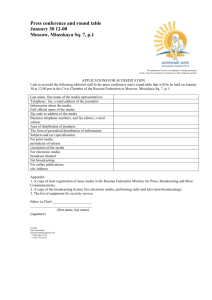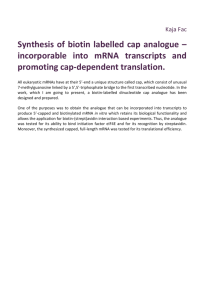Recommendation Inter-regional Seminar ITU on the transition from SECAM Kiev, 13-15.11.2000
advertisement
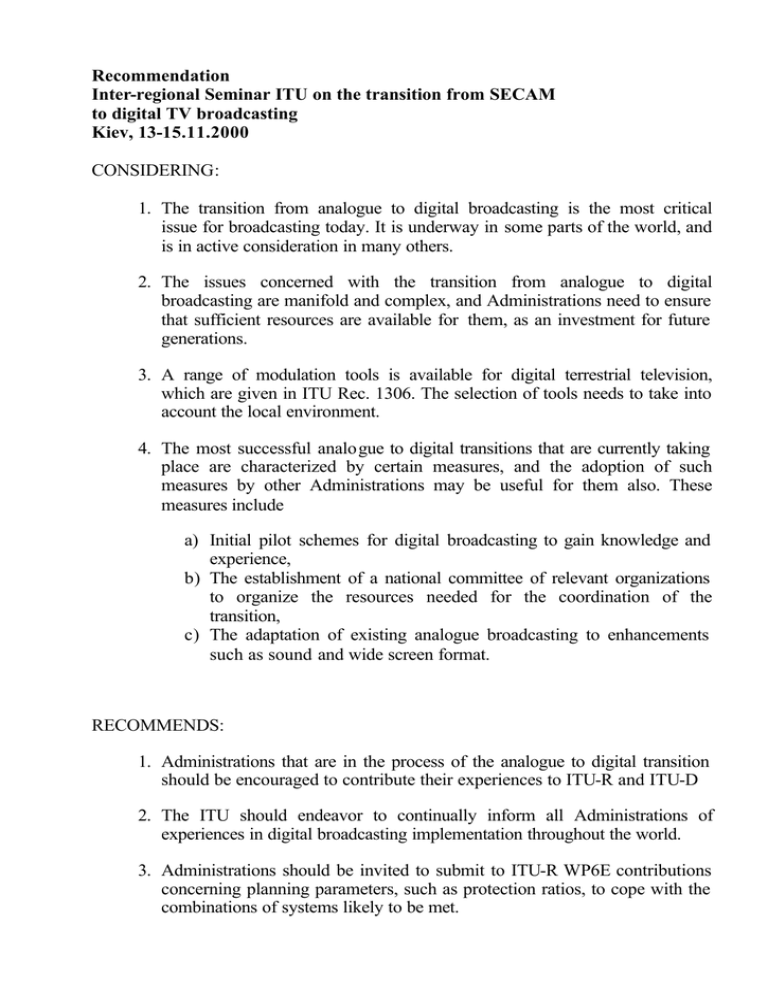
Recommendation Inter-regional Seminar ITU on the transition from SECAM to digital TV broadcasting Kiev, 13-15.11.2000 CONSIDERING: 1. The transition from analogue to digital broadcasting is the most critical issue for broadcasting today. It is underway in some parts of the world, and is in active consideration in many others. 2. The issues concerned with the transition from analogue to digital broadcasting are manifold and complex, and Administrations need to ensure that sufficient resources are available for them, as an investment for future generations. 3. A range of modulation tools is available for digital terrestrial television, which are given in ITU Rec. 1306. The selection of tools needs to take into account the local environment. 4. The most successful analogue to digital transitions that are currently taking place are characterized by certain measures, and the adoption of such measures by other Administrations may be useful for them also. These measures include a) Initial pilot schemes for digital broadcasting to gain knowledge and experience, b) The establishment of a national committee of relevant organizations to organize the resources needed for the coordination of the transition, c) The adaptation of existing analogue broadcasting to enhancements such as sound and wide screen format. RECOMMENDS: 1. Administrations that are in the process of the analogue to digital transition should be encouraged to contribute their experiences to ITU-R and ITU-D 2. The ITU should endeavor to continually inform all Administrations of experiences in digital broadcasting implementation throughout the world. 3. Administrations should be invited to submit to ITU-R WP6E contributions concerning planning parameters, such as protection ratios, to cope with the combinations of systems likely to be met. 4. ITU-D and ITU-R should be encouraged to help Administrations, particularly those with less expertise available, to assemble appropriate digital terrain data banks. The objective should be to assemble this information for the preparatory meeting for the Stockholm plan re-planning conference in 2003. 5. Steps should be taken by the ITU-R to gain a common understanding of the geographical boundaries of the regional broadcasting areas, and the European broadcasting area in particular. Administrations in the European Broadcasting Area and relevant organizations such as CEPT and EBU are encouraged to cooperate in the preparation of the revision of the Stockholm plan. 6. The transition period from analogue to digital should take into consideration the following requirements: • The rights of all countries should be respected • The coverage of territories should not decrease • The use that could be made of the existing analogue infrastructure • The transition from analogue to digital broadcasting must be carried out with simultaneous analogue and digital services during the transition period, and fair regard should be paid to analogue viewers. 7. Administrations should strongly consider the adoption of the measures a), b), c) referred to in Considering 4 above, and ITU-R SG6 should take such measures that will assist them, including completion of the draft Recommendation of Enhanced SECAM. 8. In order to minimize the mutual interference while introducing digital TV Multilateral frequency plans should be elaborated. 9. Manufacturers of digital receivers should seek to produce analogue/digital equipment of accessible cost in the transition period. 10. When purchasing new television broadcast transmission equipment, the possibility that it can be used for digital services, for example by upgrading, should be verified. 11. Seminars on transition to new broadcasting technologies are very useful and productive, and the ITU-D should regularly incorporate them in its operational activities. 12. Outstanding draft Recommendations on issues concerned with enhancements to analogue television, including ghost cancellation, should be completed in 2000. The gratitude of all participants is expressed to the Administration of Ukraine and BDT ITU for the excellent organization of the Seminar.
